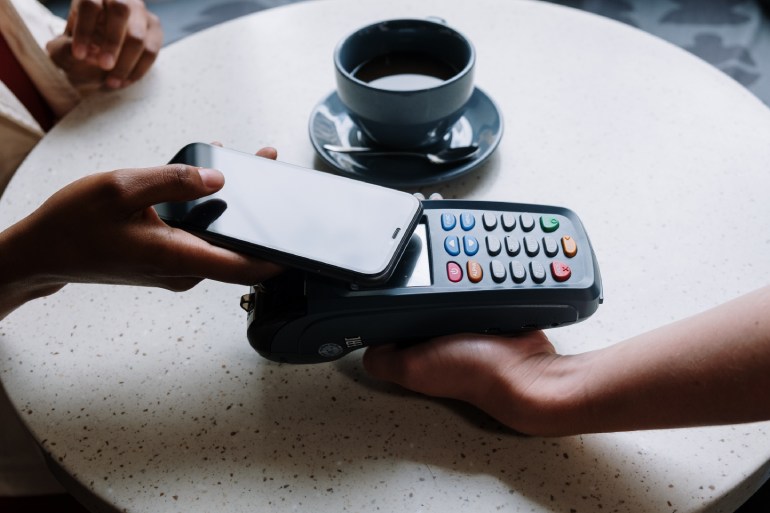- Category: July 2021 - Mobile Marketing & Analytics
 Mobile solutions are making an impact on markets and influence user behavior as well as purchasing processes. The emerging trend of simple and cashless payment via mobile devices opens new possibilities for brick-and-mortar retail.
Mobile solutions are making an impact on markets and influence user behavior as well as purchasing processes. The emerging trend of simple and cashless payment via mobile devices opens new possibilities for brick-and-mortar retail.
The global near-field communication (NFC) market was estimated at $15.53 billion in 2019, and is now expected to hit $54.52 billion by 2028, registering a CAGR of 14.8% from 2021 to 2028. The rising scope of an NFC enabled mobile device to function as a contactless smart card fuels the growth of the segment. The increasing demand for convenient transfer and security of data, a thrive to improve customer experiences, the surge in proliferation of smartphones fuels the growing demand for contactless payments due to the ongoing COVID-19 pandemic and drives the global Near Field Communication (NFC) market.
Certainly, the short operational range and security concerns restrain the growth to some extent, but the upsurge in adoption of NFC-enabled wearable technology and recent technological advancements in NFC are expected to pave the way for new opportunities in the future.
Small chips with a big impact
With NFC, a direct exchange of data between two devices is possible – wirelessly and via radio technology. On this basis, an extensive architecture can be built, with which a ‘mobile wallet” in the form of an app is ultimately created. There are hardly any limits to the variety of features and can quickly make the real wallet look old fashioned. Here, too, the focus is increasingly on the customer who can benefit from a wide variety of bonus and loyalty programs. Mobile coupons and exclusive offers can be displayed accordingly through the app and open additional options for marketers to use individualized marketing measures.
We can expect a generational shift in the physical store formats, triggered by the Coronavirus, forcing retailers to align their operations with wider industry shifts and make robust ‘in-store tech investments’ to match consumers’ demand. Today’s consumers appreciate direct purchasing options due to authenticity and price concerns. Therefore, e-commerce retailers/marketplaces must integrate technologies driven initiatives on their websites to improve the customers’ shopping journey and avoid order returns.
Safety is top priority
Combined with the corresponding features, the mobile wallet of the future will be more than just a wallet. Important, however, is to highlight that sophisticated security mechanisms should be the top priority for m-payment solutions, e.g., with an authentication key that works like the fingerprint reader on notebooks, so that the critical part of the communication path is secured via NFC.
By using mobile technology such as smartphones, tablets or smartwatches, companies and users are adapting to online and offline transactions using devices. When a user makes a payment to a merchant, the mobile app uses NFC that uses radio frequencies to communicate between devices and makes use of the personal identification format created for the user to communicate the payment information to the merchant’s point-of-service (POS) terminal. The information transfer is usually triggered when the user waves or holds an NFC-enabled mobile device over the store’s NFC reader.
Whether it is an iPhone or Android smartphone, purchases on the Internet or in brick-and-mortar stores are processing NFC registers and transfer to other mobile phone numbers is possible as well, just like paying via app and barcode scanner or with a customer card. But what’s best, fraudulent activities, such as identity theft, are harder to initiate with mobile wallets. While a user’s credit card can easily be stolen or duplicated, smartphones are not that easy to steal. A smartphone that is stolen may be hard to access if there is an access password or fingerprint check installed. Mobile wallets may also have encrypted keys. Not to mention that mobile wallets are useful for retail businesses that experience high volumes of transactions per day by reducing wait and payment times. This is a win-win for both the customers and the business.
But the main reason for the triumphal procession of mobile payment methods is convenience: the smart device is usually with you when you shop and quickly picked up to pay. Which brings us to the second most obvious reason for the hype – the time saved. That is why mobile payment is spreading more and more in retail and is becoming more popular as a result.
Mobile payment is easy and convenient for consumers, but to keep it safe, the smartphone should certainly always be comprehensively secured. This includes the installation of a security solution and all updates provided for the apps and the operating system. Then nothing stands in the way of untroubled shopping fun.
By Daniela La Marca


